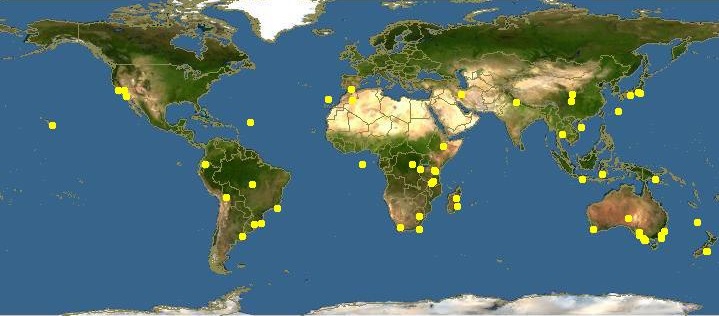Difference between revisions of "Acacia mearnsii"
From DMT-Nexus Wiki
(→Other uses) |
|||
| (One intermediate revision by one user not shown) | |||
| Line 1: | Line 1: | ||
== General Plant Info == | == General Plant Info == | ||
| + | The bark of this species often contains 20–40% tannins and bark extracts about 70% proanthocyanidins<ref>Photochemistry of Acacia, Dept of Plant Biology, University of Illinois</ref> | ||
== Geographic distribution == | == Geographic distribution == | ||
| − | + | [[File:mearnsii-map.jpg]] | |
== Identification == | == Identification == | ||
== Alkaloid content == | == Alkaloid content == | ||
| − | + | ||
== Extraction == | == Extraction == | ||
| Line 19: | Line 20: | ||
== References == | == References == | ||
| + | <references/> | ||
Latest revision as of 12:06, 26 August 2015
Contents
General Plant Info
The bark of this species often contains 20–40% tannins and bark extracts about 70% proanthocyanidins[1]
Geographic distribution
Identification
Alkaloid content
Extraction
Other uses
The potent anti-inflammatory activity of essential oils of A. mearnsii are traditionally used in treating various inflammatory diseases.[2]
Cultivation
Suppliers
Links
References
- ↑ Photochemistry of Acacia, Dept of Plant Biology, University of Illinois
- ↑ http://www.ncbi.nlm.nih.gov/pubmed/25422136
